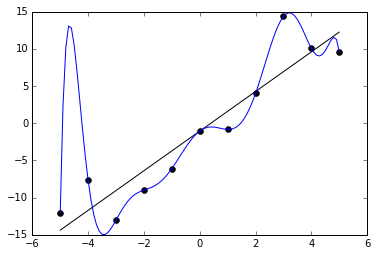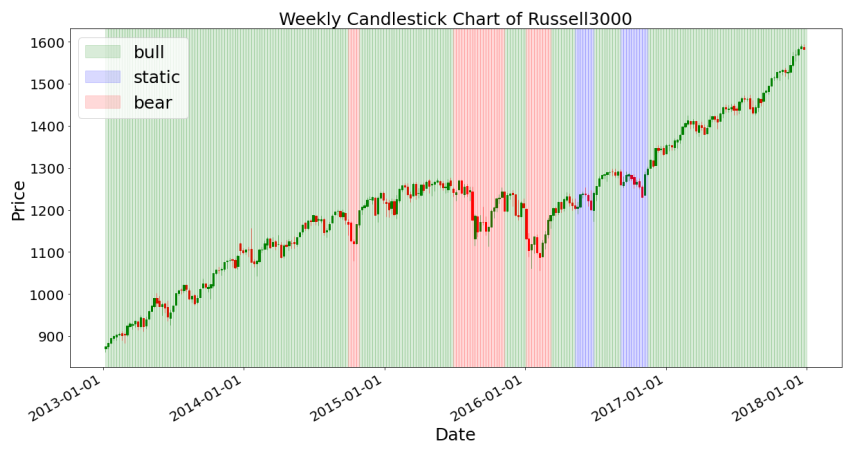Unveiling the Hidden Risks: Why Machine Learning May Not Be Your Best Bet for Trading Success
In recent years, Machine Learning (ML) has gained significant attention in various industries, including finance and trading. The promise of automated decision-making based on sophisticated algorithms has enticed many traders and investors. However, it is crucial to understand the limitations and potential risks associated with relying solely on Machine Learning for trading strategies. This blog post will delve into the reasons why caution should be exercised when using Machine Learning in the trading domain.
Table of Contents
- Limitations of Machine Learning in Financial Markets
- Risks and Drawbacks of Relying Solely on ML Algorithms
- Ethical Concerns Surrounding the Use of Machine Learning in Trading
- Alternatives to Machine Learning in Trading Strategies
- The Importance of Human Oversight in Trading Decisions
- Why I chose to avoid ML for now
- Conclusion
Limitations of Machine Learning in Financial Markets
Despite its promises, Machine Learning has inherent limitations in the context of financial markets. Firstly, financial markets are influenced by a myriad of complex factors that may not be easily captured by historical data. ML models are trained on past market behavior, assuming that history will repeat itself. However, financial markets are dynamic and can be affected by unexpected events, rendering historical patterns less reliable.
Moreover, Machine Learning models can suffer from overfitting, a phenomenon where the model becomes too specialized in historical data and fails to generalize well to new data. This can lead to poor performance and inaccurate predictions, potentially resulting in significant financial losses. I cover the concept of overfitting in this post.

Risks and Drawbacks of Relying Solely on ML Algorithms
Relying solely on Machine Learning algorithms for trading decisions carries inherent risks. ML models are designed to optimize specific objectives, such as maximizing profits or minimizing risks. However, these objectives may not align with the trader’s overall goals or risk appetite. The lack of human intervention can lead to unintended consequences, especially in volatile market conditions.
Additionally, ML models require continuous monitoring and adjustment to account for changing market dynamics. Markets can exhibit patterns that evolve over time, rendering static ML models ineffective. One approach to address this risk is to frequently retrain a ML model. Although this may help account for any recent change in market dynamic, it may not capture a regime change. A market regime is defined as clusters of persistent market conditions. The following diagram illustrates one interpretation of market regimes for the Russell3000. Unfortunately, there are many ways to detect and define when regimes switch (see reference), which means there is more risk to end up overfitting.

Ethical Concerns Surrounding the Use of Machine Learning in Trading
The use of Machine Learning in trading also raises ethical concerns. There is a potential for biased decision-making if the training data used to develop the ML models is itself biased. This can perpetuate inequalities and unfair practices in the financial markets. Moreover, the opacity of ML algorithms can make it difficult to explain and justify trading decisions, leading to a lack of transparency and accountability.
In my opinion, the second ethical concern of opacity is difficult to mitigate. Besides trying to convince friends or clients to trust your investing decisions, you want to be able to trust them yourself. Let’s assume that I’ve started with a solid hypothesis about market conditions and the data available to me, I will choose a suitable ML algorithm that I understand conceptually. For instance, I will aim to profit from anomaly detection using an SVM algorithm. I know that an SVM model is basically a representation of different classes in a hyperplane in multidimensional space. What happens if the SVM algorithm makes a prediction I didn’t expect? Am I able to troubleshoot the SVM algorithm’s code to understand where it went wrong?
This article does a great job going into more detail on ethical considerations. I will quote one of their diagrams here.

Alternatives to Machine Learning in Trading Strategies
While Machine Learning can offer valuable insights, it should not be the sole foundation for trading strategies. It is important to consider a range of complementary approaches, including fundamental analysis, technical analysis, and expert judgment. These alternative methods can provide a more understanding of market dynamics and help mitigate the limitations of Machine Learning.
Additionally, there are a few precautions we can follow to remain prudent. I would strongly suggest to build a robust risk management framework. When an ML algorithm goes ‘off the rails’, you can limit the damage once a risk factor threshold is breached. A solid amount of backtesting will also show weaknesses in any implementation given that the testing data is well chosen. By weakness, I mean unexpected or unexplained outcomes, not just poor returns.
The Importance of Human Oversight in Trading Decisions
In the world of trading, human oversight plays a vital role in decision-making. While Machine Learning can process vast amounts of data and identify patterns, it lacks the ability to interpret contextual information, understand market sentiment, and make nuanced judgments. Human traders bring experience, intuition, and the ability to adapt to changing market conditions.
Human oversight also helps in identifying and managing risks. Traders can incorporate their own risk assessments, set appropriate stop-loss levels, and make decisions based on factors that go beyond historical data. By combining the power of Machine Learning with human judgment, traders can make more informed and well-rounded decisions.
Resist the urge to simply throw more data, or features, at your ML algorithm to make it better. Too many features can overwhelm simpler algorithms or make complex algorithms’ outcomes impossible to explain. We may have beaten world champions at the game of Go with AI, but the market is infinitely more complex.
Why I chose to avoid ML for now
I encourage you to form your own opinion on the value of applying ML to your trading. Personally, I can share that I have spent the past two years exploring various angles on both Quantconnect and the defunct Quantopian. My passion for the promise of ML hasn’t abated. However, I have not found any ML algorithm that satisfied my performance goals. I’ll give two examples.
Forums on both sites abound with examples of ML algorithms. I’ve tried probably 100+ different algorithms. When backtesting, some results were encouraging. Unfortunately, the best results did not significantly outperform simple rule based technical trading. In my limited experience, I will always prefer simple explanations to obscure decisions.
I’ve spent the past year exploring volatility trading. My reference for volatility trading is Brent Osachoff. I have successfully replicated his 10+ indicators. On a daily basis, he will make his trading decisions based on the indicators. I tried to replicate his performance using ML without success. You could argue that my skill is limited and you might be right.
Conclusion
While Machine Learning offers exciting possibilities for trading, it is essential to approach its implementation with caution. Understanding the limitations, risks, and ethical concerns associated with relying solely on Machine Learning is crucial for successful trading strategies. By incorporating human oversight, considering alternative approaches, and recognizing the dynamic nature of financial markets, traders can navigate the complexities and make informed decisions that align with their goals and risk tolerance.
Remember, Machine Learning is a tool that should complement human expertise rather than replace it. The key to successful trading lies in striking the right balance between automation and human judgment.
